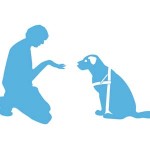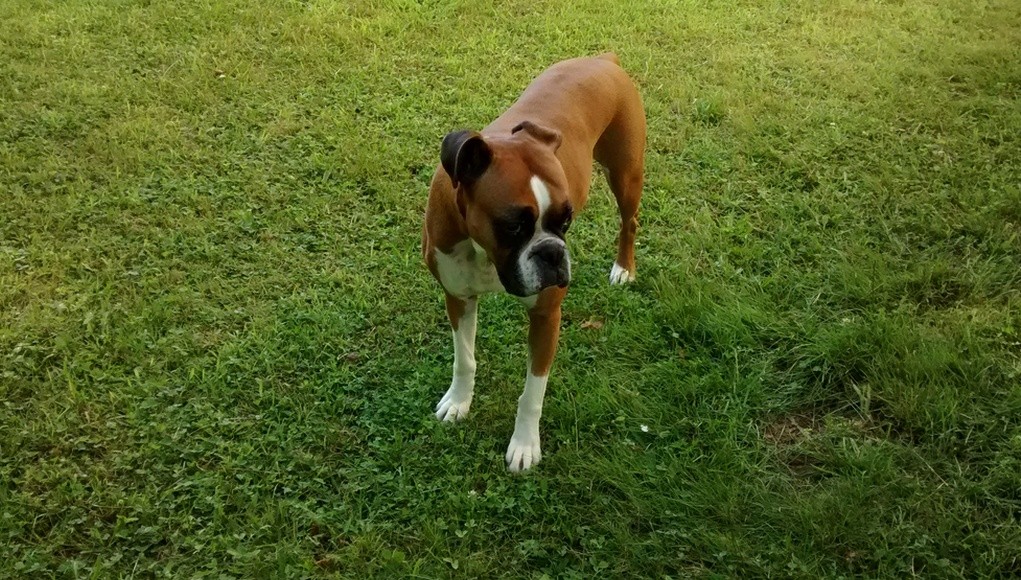Hopefully you’ve all been able to check out my Sunday Recap from last week. Those columns give me a wonderful chance to connect with you guys and talk a little bit about the dog related books, blogs, and articles that I've read over the week. Now, I also want to share a little bit of my personal experience with dogs and ask for your thoughts.
 Let's Talk [about dogs] is our new weekly column published every Wednesday where Top Dog Tips editors will bring interesting topics for discussion and invite you, the reader, to pitch in with your insights, thoughts and ideas on the subject matter. It will give us a chance to throw around some great tips, tricks and information that we've all picked up in our years of being dog owners.
Let's Talk [about dogs] is our new weekly column published every Wednesday where Top Dog Tips editors will bring interesting topics for discussion and invite you, the reader, to pitch in with your insights, thoughts and ideas on the subject matter. It will give us a chance to throw around some great tips, tricks and information that we've all picked up in our years of being dog owners.
I would love for these columns to be able to bring us all together as a community of responsible dog owners who are also passionate about spoiling about pets with all types of dog products. As always, your feedback on how to improve this column is greatly encouraged and always welcomed in the comments below. And now that the formalities are out of the way – let's talk.
This week’s column is about a cause that is near and dear to my heart: responsible dog breeding. We all know about puppy mills and the dangers that irresponsible breeding brings onto the mother and her pups, but my family deals with the consequences of irresponsible breeding every day.

This is Chloe (pictured on the right, doing what she does best – sleeping like a human). She’s approximately 5 years old and she is the sweetest little girl you’ll ever meet. Okay, I know I’m a little biased, but seriously, she has the most wonderful temperament and loving personality, and our family absolutely adores her. We’ve raised boxers for about 10 years now and we are very passionate about the breed, so when Chloe needed a good home we welcomed her with open arms.
Chloe was abandoned on the side of the road. Malnourished, covered in frost bite, and left to freeze to death on a cold March night in Maine. There was still snow on the ground and the temperature that night was below freezing. Thankfully some good Samaritans found Chloe and took her to our local veterinarian’s office first thing in the morning.
Sadly, these do-gooders could not keep Chloe, as they already had a few dogs of their own. This just happened to be the vet where we take our animals, and they called asking if we would foster this sweet little girl. It didn’t take more than 1 night for our “fostering” to turn into adoption, and Chloe has been part of our family ever since.
[optin-monster-shortcode id=”mmevqhqfl46p1is5″]
Now, I know you’re probably thinking, “Sweet story, but what does this have to do with responsible breeding?” Well, Chloe was about 2 years old when she was abandoned and by the scarring on her uterus our veterinarian estimated that she had been bred at least 3 times. That means she was bred way too early, which had lasting effects on her growth and development.

That in itself is certainly grounds to say that Chloe was bred irresponsibly, but that’s not even the tip of the iceberg. Chloe has been with us now for over 2 years and about 6 months ago she was diagnosed with Boxer Arrhythmogenic Right Ventricular Cariomyopathy, an inherited disease that is typically adult onset.
Cardiomyopathy is very common in boxers, and because it is genetic, the only way to stop the spread of the disease is to stop breeding dogs that carry it. Unfortunately, Chloe was given the disease from her mother, and now she’s also passed it on to the puppies in the litters that she had before she was abandoned. Because we are unsure of where she came from or where her puppies went, there are now numerous other carriers of the disease out there and we have no way to warn the owners.
It cost us thousands of dollars to have Chloe diagnosed and treated. She was at an emergency veterinary clinic for four days and three nights. No one thought she would survive. Thankfully she is a fighter and we were able to bring her home with us after what my husband and I now refer to as “the longest weekend of our lives.”

Although she is now happily at home with us, cardiomyopathy cannot be cured, it can only be treated. So our poor Chloe has to be on a heart healthy diet, cannot partake in any extreme exercising (like hiking, which used to be one of our favorite things to do together), and she has to take 7 pills a day. These pills need to be given at 7:30 a.m., 8:00 a.m., 4:00 p.m., 7:30 p.m., and 12:00 a.m. As you can see, this greatly limits the flexibility in our family’s schedule.
Chloe isn’t the only dog that has a story like this. How many people do you know that could not afford the treatment for a dog diagnosed with a disease like this? What about the $100 every month that we now have to spend on prescription medication for her? Not to mention that most people would not be available to give their dog a scheduled medication 5 times a day. Thankfully, I work from home, so this is an option for us.
Sadly, most dogs in this situation are euthanized. It isn’t right that a dog’s life is cut short or their quality of life is diminished because some irresponsible breeder simply wanted to make a few bucks off a litter of puppies. The reason that inherited diseases are so common is because irresponsible breeders continue to breed dogs carrying the disease.
THIS NEEDS TO STOP!
The only way to stop irresponsible breeders is to stop buying their dogs.
Whenever you are in the market for a puppy, take it seriously. Don’t just buy the cheapest puppy you can find or purchase one from the first ad you see in the paper. Check out the breeder, check out the parents, and make sure that the breeder is responsible. If anyone you know is shopping for a puppy, encourage them to do the same thing.
For more information on how to select a responsible breeder, you can check out our column Where to Buy a Dog: Responsible Adoption. I cannot stress enough how important it is to select a responsible breeder, and if you ever come across an irresponsible breeder call animal control immediately. These breeders need to be stopped, and the only way to do that is to educate current dog owners and potential pet parents about the dangers of irresponsible breeding and how it can affect generations of dogs.
This column is small and reaches a very limited number of dog parents, but if it educates at least one person about the dangers of irresponsible breeding and the importance of adopting from a reputable source, then it is worth it.
Now it's your turn.
Have you had any experiences with responsible or irresponsible breeding? What are your thoughts on the whole subject matter in general? Let's talk about it.













